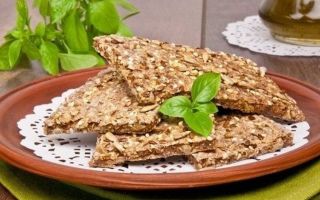Content
- 1 What buckwheat bread is made of
- 2 The composition and calorie content of buckwheat bread
- 3 The benefits of buckwheat bread
- 4 Buckwheat bread for weight loss
- 5 Features of the use of buckwheat bread
- 6 What are buckwheat breads combined with?
- 7 Buckwheat bread recipe
- 8 Why buckwheat bread is harmful
- 9 Conclusion
Buckwheat bread occupies an honorable place in the diet of adherents of correct, healthy and wholesome nutrition. They replace classic bakery products, improve the functioning of the gastrointestinal system, and promote weight loss. At the same time, the benefits and harms of buckwheat bread causes controversy among nutritionists, due to their significant calorie content.
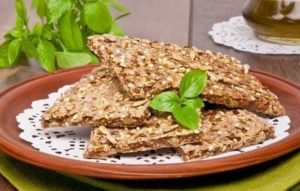
What buckwheat bread is made of
Whole buckwheat is the basis of the bread. After soaking for 12 hours, the grain is subjected to the extrusion process - short heating to very high temperatures (up to 300 degrees) under a press. As a result, the water accumulated in the beans instantly turns into steam, tearing them apart and turning them inside out, like popcorn. The pressure prevents the mass from scattering, compresses it into dense briquettes.
There is another production method, which is identical to the process of baking bread. Instead of whole grains, manufacturers use buckwheat flour, milk powder, vegetable fats, water, sweeteners, flavor enhancers. The dough is formed into rectangular layers, which are then baked. As a result of processing, buckwheat loses some of its beneficial properties, fiber is destroyed. Buckwheat bread is becoming tastier, but it is not worth using them in medical or dietary nutrition, they will do more harm than good.
The composition and calorie content of buckwheat bread
The energy value, calculated for 100 g of buckwheat bread, is 280 - 300 kcal, depending on the manufacturer. For comparison, in white bread this figure reaches 260 points. However, the calorie content of 1 buckwheat loaf weighing 10 g is less than 30 kcal, while a similar piece of white bread or loaf will harm the figure.
Breads can harm the figure only if the recommended norm is significantly exceeded, they are used together with high-calorie foods that do not have useful properties: jam, condensed milk, chocolate, fatty sour cream.
Despite the high calorie content, crispbreads serve as a source of healthy fiber due to the content of whole grains. Buckwheat briquettes provide an adult with soluble and insoluble dietary fiber for more than 40% of the daily requirement.
Buckwheat slices acquire useful properties due to the content:
- folic acid, which is involved in the processes of blood formation, prevents the occurrence of anemia, the growth of cancer cells; regulates the work of the heart muscle, blood vessels, is responsible for immunity. Buckwheat plates contain 25 mg of the substance, which is 3% of the daily human requirement;
- gland, necessary for the production of hemoglobin, thyroid function, metabolism. The product covers 4% of the daily requirement;
- vitamin PP, useful for the digestive tract, cardiovascular system, hormone production, tissue renewal. In addition, vitamin B3 promotes the production of hemoglobin and prevents the accumulation of cholesterol.The loaves contain 5 mg of the substance, 3% of the daily value;
- vitamins B1, B6, B2, which have a beneficial effect on memory, immunity, the work of the excretory, digestive, endocrine systems, and the brain. In total, a buckwheat product covers 10% of the daily requirement of an adult body for B vitamins.
The crispbreads are rich in useful macro- and microelements that have come from buckwheat. They have a high content of magnesium, copper, manganese, zinc, phosphorus, potassium, selenium.
The benefits of buckwheat bread
With regular use, buckwheat breads bring noticeable benefits: they improve the functioning of the pancreas, gallbladder, liver, kidneys, lower cholesterol, and prevent the development of oncology.
Useful properties of buckwheat briquettes:
- High in indigestible fiber. Coarse fibers have the ability to cleanse the intestines, like a brush. They eliminate toxins, prevent constipation, diarrhea, and stimulate salivation. During the breakdown of fiber, slow carbohydrates are produced, which ensure long-term satiety.
- Low glycemic index. The glycemic index of buckwheat bread is 45 points. This suggests that they quickly saturate, without provoking sharp spikes in blood glucose.
- Gluten free. Recommended for people suffering from individual intolerance, allergies.
- High-quality and properly prepared bread does not contain salt, sugar, yeast. These components cause significant harm to the figure, provoke indigestion, bloating, diarrhea, and can lead to edema, allergic rashes. Braces that contain exclusively whole grains are more beneficial for digestion.
Breads made from buckwheat contain about 52 g of slow carbohydrates. They contribute to a long-term feeling of fullness, normalization of blood glucose levels, and a decrease in the amount of calories entering the body.
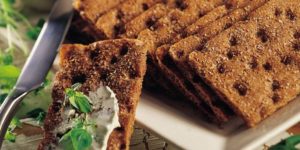
Buckwheat bread for weight loss
According to their properties, buckwheat slices are recommended for overweight people. Unlike white bread, they are easier to digest, digested longer by the body, and dull hunger. To achieve the desired effect, it is important to choose and eat them correctly.
Losing weight is facilitated by briquettes, which contain whole grains, no yeast, flour, salt, starch, sugar. Breads made from ground buckwheat flour will not be beneficial, have a significant glycemic index, contribute to the formation of sugar in the blood, which means they form body fat. Salt has the property of preventing the elimination of fluid from the body, sugar adds unnecessary calories.
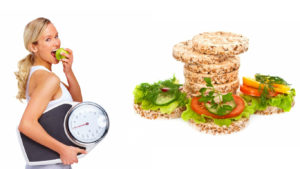
Features of the use of buckwheat bread
The use of the product has certain characteristics, depending on the presence and nature of the current disease, human activity, age.
With pancreatitis, gastritis, ulcers, buckwheat bread can be consumed only with the permission of a doctor and no more than 100 g per day. With an exacerbation of gastrointestinal diseases, diarrhea, progressive constipation, they will have to be abandoned.
For children under 3 years of age, any bread is contraindicated, since it is harmful to digestion. The child's body is not able to digest such a high level of fiber.
The beneficial properties of buckwheat bread have a beneficial effect on the work of the muscles of athletes during the period of intense training.
Pregnant women can replace some of the baked goods with buckwheat briquettes. The beneficial properties of folic acid will have a beneficial effect on the intrauterine development of the baby. In case of constipation, the number of loaves should be reduced to 3 per day.
When breastfeeding, buckwheat bread can be gradually introduced into the diet. The main thing is not to exceed the recommended dose of 100 g and carefully monitor the baby's reaction. With bloating, colic, increased gas production in an infant, the introduction of a new product after childbirth will have to be delayed.
People with diabetes should read the label carefully before purchasing. You can add sugar-free buckwheat slices to your diet. A healthy daily allowance is no more than 100 g.
What are buckwheat breads combined with?
Buckwheat slices, due to their neutral taste, go well with almost any products, the benefits of which are beyond doubt among nutritionists: vegetables, meat, herbs, canned fish, caviar, cottage cheese, berries. Bread can be a great base for a sandwich. As a healthy snack, it is harmoniously combined with drinks: compote, jelly, kefir, tea, cocoa, milk.
During diets, buckwheat slices can serve as a base for delicious, nutritious desserts. For maximum benefit, add nuts, dried fruits, honey to the crushed briquettes.

Buckwheat bread recipe
A healthy and tasty product can be cooked in the oven at home.
Recipe 1... Unleavened buckwheat sticks in the oven.
Ingredients:
- buckwheat - 1 tbsp.;
- oatmeal - ½ tbsp.;
- salt to taste;
- water (how much dough will take).
Preparation:
- Grind buckwheat and oatmeal with a blender to flour.
- Add some salt for flavor.
- Pour in water. The mass should be thick, not stick to your hands. Just enough water is needed to form sticks.
- Place the items on a baking sheet lined with parchment paper.
- Bake for about 30 minutes until tender.
Recipe 2... Boiled buckwheat bread
Ingredients:
- boiled buckwheat - 1 tbsp.;
- milk - 200 ml;
- flour - 1 tbsp.;
- egg - 1 pc.;
- yeast - 1 tsp;
- sunflower oil (olive oil can be used) - 3 tbsp. l .;
- salt - a pinch.
Preparation:
- Prepare the dough: pour yeast into the warmed milk, stir, sift 2 tbsp. l. flour, leave for 15 minutes.
- Introduce boiled buckwheat into the dough, beat the egg, salt, mix.
- Add butter, sifted flour, knead until smooth.
- Leave the dough for 1 hour in a warm, dry place.
- "Lower" the matched dough, roll it out, about 1 cm thick. Cut out the circles with a glass.
- Transfer them to a baking sheet lined with parchment.
- Bake for 20 minutes until browning at 185 - 190 degrees.
Homemade buckwheat bread turns out to be as tasty and healthy as store-bought ones.
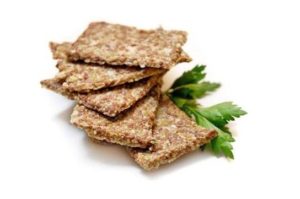
Why buckwheat bread is harmful
A contraindication to the use of bread is, first of all, an allergy or individual intolerance to buckwheat products.
With excessive, uncontrolled food intake, high calorie content of briquettes can also bring harm. The maximum amount recommended by nutritionists does not exceed 100 g per day.
The benefits of coarse fibers for an adult body can result in harm and indigestion in babies under 3 years old. Their body is not yet ready for such food loads.
Conclusion
The benefits and harms of buckwheat bread for medical and dietary nutrition have long been studied. Only slices made from whole grains without additional additives have a therapeutic effect. Compliance with the recommendations for use will help to establish excellent digestion, improve mood and appearance.

